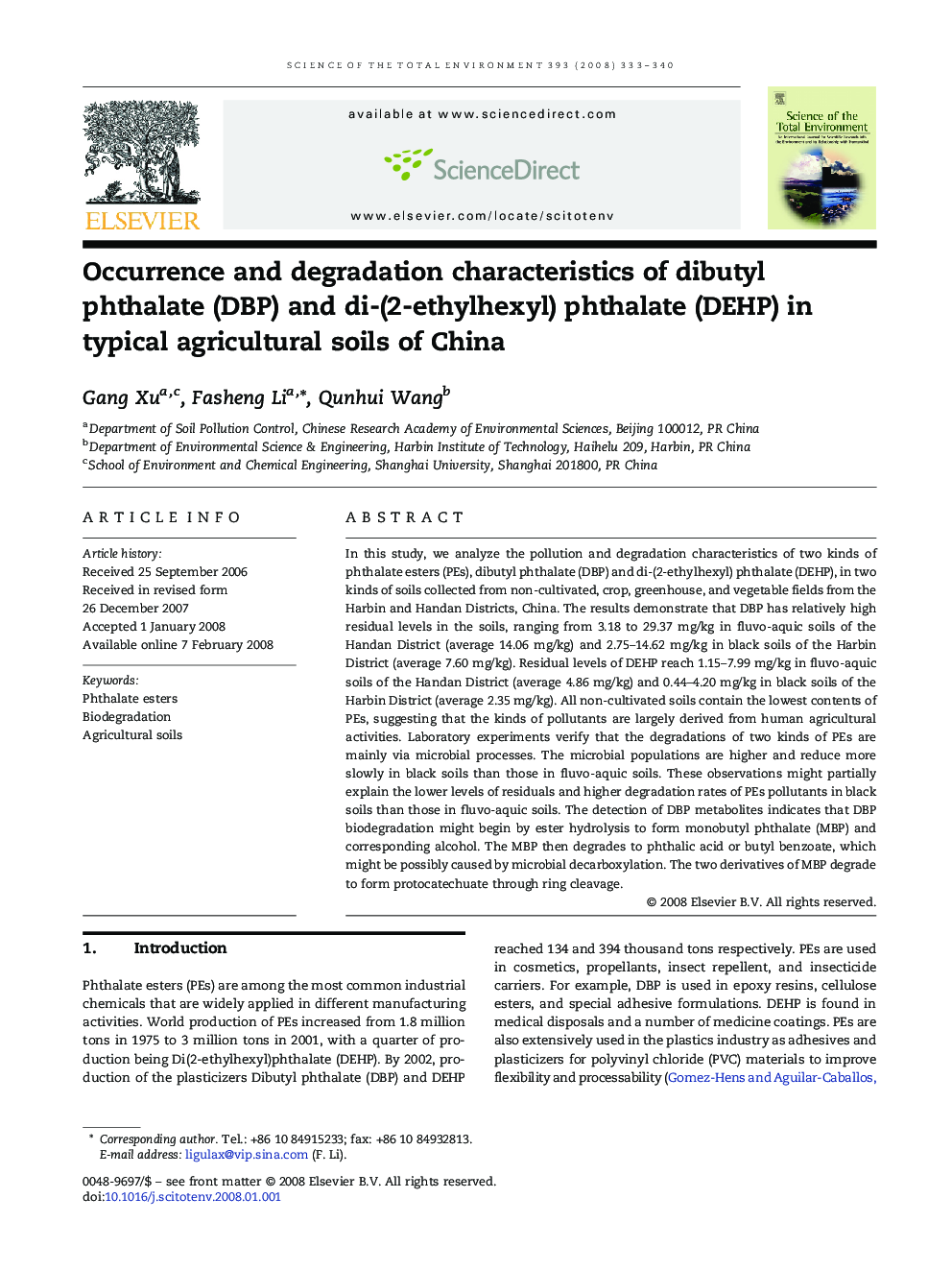| کد مقاله | کد نشریه | سال انتشار | مقاله انگلیسی | نسخه تمام متن |
|---|---|---|---|---|
| 4432297 | 1619929 | 2008 | 8 صفحه PDF | دانلود رایگان |

In this study, we analyze the pollution and degradation characteristics of two kinds of phthalate esters (PEs), dibutyl phthalate (DBP) and di-(2-ethylhexyl) phthalate (DEHP), in two kinds of soils collected from non-cultivated, crop, greenhouse, and vegetable fields from the Harbin and Handan Districts, China. The results demonstrate that DBP has relatively high residual levels in the soils, ranging from 3.18 to 29.37 mg/kg in fluvo-aquic soils of the Handan District (average 14.06 mg/kg) and 2.75–14.62 mg/kg in black soils of the Harbin District (average 7.60 mg/kg). Residual levels of DEHP reach 1.15–7.99 mg/kg in fluvo-aquic soils of the Handan District (average 4.86 mg/kg) and 0.44–4.20 mg/kg in black soils of the Harbin District (average 2.35 mg/kg). All non-cultivated soils contain the lowest contents of PEs, suggesting that the kinds of pollutants are largely derived from human agricultural activities. Laboratory experiments verify that the degradations of two kinds of PEs are mainly via microbial processes. The microbial populations are higher and reduce more slowly in black soils than those in fluvo-aquic soils. These observations might partially explain the lower levels of residuals and higher degradation rates of PEs pollutants in black soils than those in fluvo-aquic soils. The detection of DBP metabolites indicates that DBP biodegradation might begin by ester hydrolysis to form monobutyl phthalate (MBP) and corresponding alcohol. The MBP then degrades to phthalic acid or butyl benzoate, which might be possibly caused by microbial decarboxylation. The two derivatives of MBP degrade to form protocatechuate through ring cleavage.
Journal: Science of The Total Environment - Volume 393, Issues 2–3, 15 April 2008, Pages 333–340